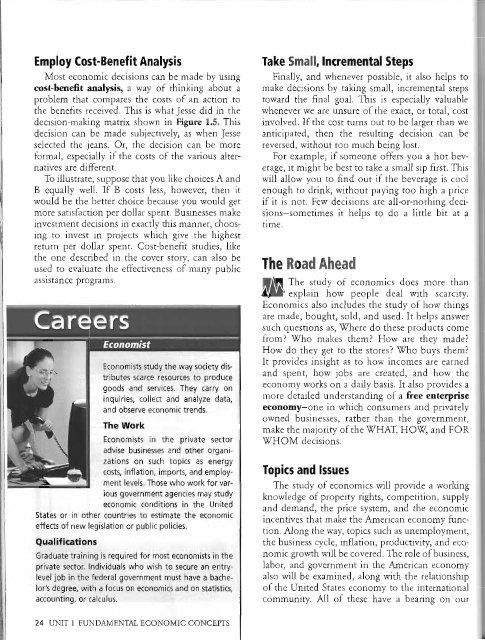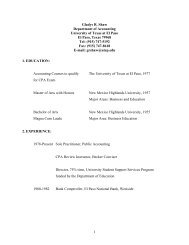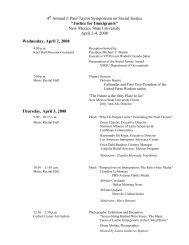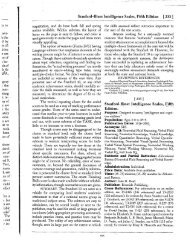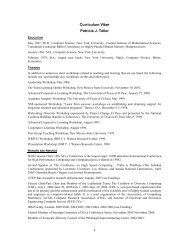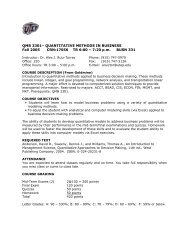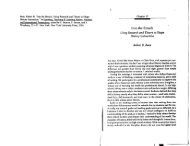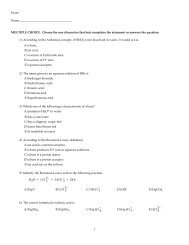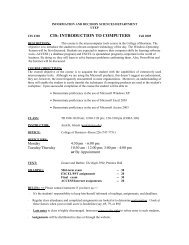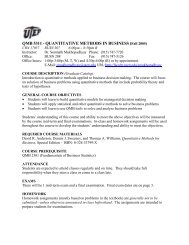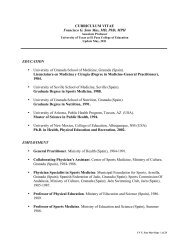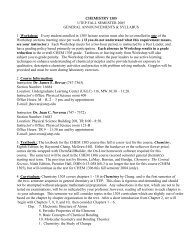Supply & Demand - Faculty.utep.edu
Supply & Demand - Faculty.utep.edu
Supply & Demand - Faculty.utep.edu
You also want an ePaper? Increase the reach of your titles
YUMPU automatically turns print PDFs into web optimized ePapers that Google loves.
Employ Cost-Benefit AnalysisMost economic decisions can be made by usingcost-benefit analysis, a way of thinking about aproblem that compares the costs of an action tothe benefits received. This is what Jesse did in thedecision-making matrix shown in Figure 1.5. Thisdecision can be made subjectively, as when Jesseselected the jeans. Or, the decision can be moreformal, especially if the costs of the various alternativesare different.To illustrate, suppose that you like choices A andB equally well. If B costs less, however, then itwould be the better choice because you would getmore satisfaction per dollar spent. Businesses makeinvestment decisions in exactly this manner, choosingto invest in projects which give the highestreturn per dollar spent. Cost-benefit studies, likethe one described in the cover story, can also beused to evaluate the effectiveness of many publicassistance programs.Economists study the way society distributesscarce resources to producegoods and services. They carryoninquiries, collect and analyze data,and observe economic trends.The WorkEconomists in the private sectoradvise businesses and other organizationson such topics as energycosts, inflation, imports, and employmentlevels. Those who work for variousgovernment agencies may studyeconomic conditions in the UnitedStates or in other countries to estimate the economiceffects of new legislation or pUblic policies.Qual ificationsGraduate training is required for most economists in theprivate sector. Individuals who wish to secure an entryleveljob in the federal government must have a bacheI'or's degree, with a focus on economics and on statistics,accounting, OJ calculus.Take Small, Incremental StepsFinally, and whenever possible, it also helps tomake decisions by taking small, incremental stepstoward the final goal. This is especially valuablewhenever we are unsure of the exact, or total, costinvolved. If the cost turns out to be larger than weanticipated, then the resulting decision can bereversed, without too much being lost.For example, if someone offers you a hot beverage,it might be best to take a small sip first. Thiswill allow you to find out if the beverage is coolenough to drink, without paying too high a priceif it is not. Few decisions are all-or-nothing decisions-sometimesit helps to do a little bit at atime.The Road AheadThe study of economics does more than.... explain how people deal with scarcity.Economics also includes the study of how thingsare made, bought, sold, and used. It helps answersuch questions as, Where do these products comefrom? Who makes them? How are they made?How do they get to the stores? Who buys them?It provides insight as to how incomes are earnedand spent, how jobs are created, and how theeconomy works on a daily basis. It also provides amore detailed understanding of a free enterpriseeconomy-one in which consumers and privatelyowned businesses, ratber than the government,make the majority ofthe WHAT, HOW, and FORWHOM decisions.TOpics and IssuesThe study of economics will provide a workingknowledge of property rights, competition, supplyand demand, the price system, and the economicincentives that make the American economy function.Along the way, topics such as unemployment,the business cycle, inflation, productivity, and economicgrowth will be covered. The role ofbusiness,labor, and government in the American economyalso will be examined, along with the relationshipof the United States economy to the internationalcommunity. All of these have a bearing on our24 UNIT 1 FUNDAMENTAL ECONOMIC CONCEPTS


